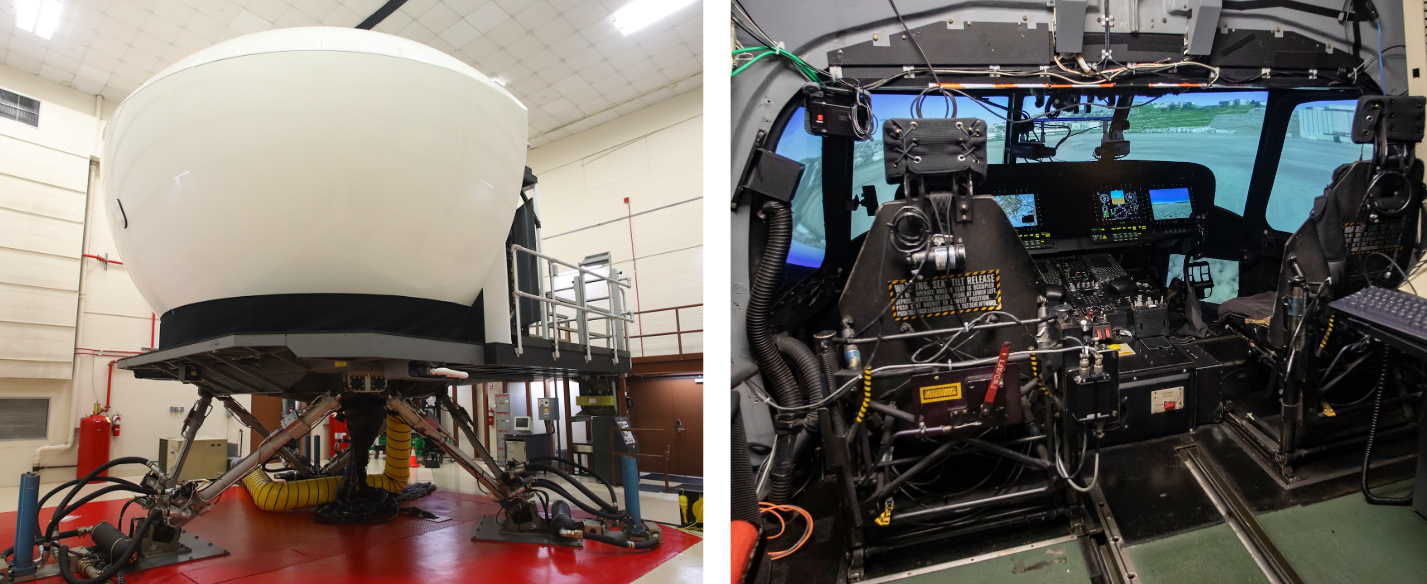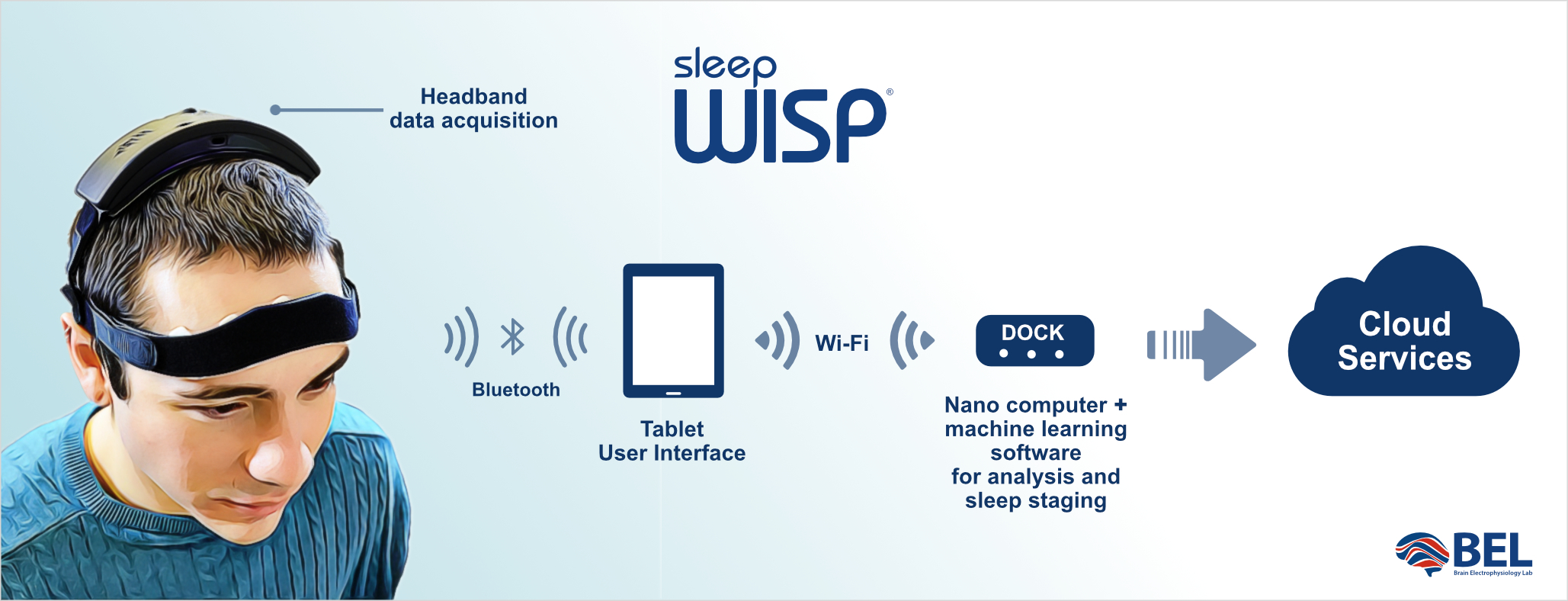BEL scientists are working under a US Army CRADA (Cooperative Research and Development Agreement ) with Dr. Amanda Kelley, Dr. Sergei Turovets and their colleagues in the Warfighter Performance Group of the U. S. Army Aeromedical Research Laboratory at Fort Novosel, AL.

The Warfighter Performance Group studies factors affecting performance of pilots, including those flying one of the most famous workhorses of Army aviation, the UH-60 Blackhawk.
The goal of this research is to understand how to optimize the neurophysiological efficiency of a restricted period of sleep, such is common under military operations, to provide optimal performance under stress.

A sophisticated UH 60 simulator allows testing of highly challenging operational demands of rotorcraft flight.
BEL is providing the USAARL group with the Neurosom Electric Sleep Therapy (NEST) technology, using the Wireless Interface Sensor Pod (WISP) for transcranial electrical stimulation (TES) synchronization of slow oscillations of deep sleep, as assessed with onboard machine learning with a convolutional neural network.
This project leverages the Augmented Neural Oscillation Driver (AugNOD) protocol developed with support of the US Army under the Medical Technology Enterprise Consortium, Drs. Dawn Kernagis and Don Tucker, Principal Investigators.

The Sleep WISP, a comfortable headband with the Home Sleep Therapy System will measure EEG activity during the night and send painless electrical currents to boost N3 sleep in the wearer. The study will test memory performance for participants before and after the sleep therapy to monitor any improvement.